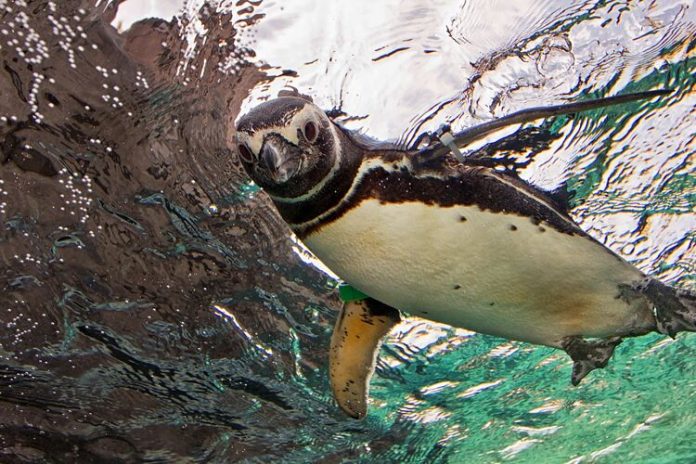By Brooklynn Wong
Diver, photographer and Southern California native Mike Bartick lectured at the Aquarium of the Pacific recently, sharing images and telling tales of a world largely unknown.
Bartick spends his time in a world most people avoid—the deep sea at night.
He has made a career of doing these dives, primarily to photograph the creatures he comes across—“subjects,” as he calls them—and also to consult scientists when they have questions about these niche little-known creatures often neglected by the science world, but well-known by him.
Bartick was born in Southern California and says diving in the local waters will always be “his first love,” but he now works primarily in the Philippines, in the Verde Island Pass.
The Aquarium of the Pacific hosts periodic lectures, and a good showing came out to hear Bartick.
Aquarium President Dr. Jerry Schubel introduced Bartick and shared that Bartick’s photography is featured in the new plankton gallery in the Aquarium’s expanded Pacific Visions portion.
Bartick shared his background and his photos, saying, “Many of these subjects that we encounter have never been seen before.”
So what does he see when he dives in the deep? Apex predators? Sharks? No, something even more mysterious. Tiny planktons and obscure jellyfish.
He dives in the top 100 feet of the pelagic zone. The pelagic, according to Bartick, is the top 600 feet of the open water out away from the coast. He and his crew follow the tides and feeding times, which means they often go out in the middle of the night and stay through the morning. When it’s dark, they shine bright lights that attract the subjects in their upward migration.
These creatures have anomalies that are not widely seen, like long protrusions, bioluminescence and symbiotic relationships, such as one individual fish and one jellyfish sticking together and growing together over their lifespan.
A diverse group was captivated by what Bartick presented.
See his photography and read more about him at saltwaterphoto.com.
See the Aquarium of the Pacific’s schedule of remaining lectures in the months of August and September at http://www.aquariumofpacific.org/events/list/category/guest_speaker.

